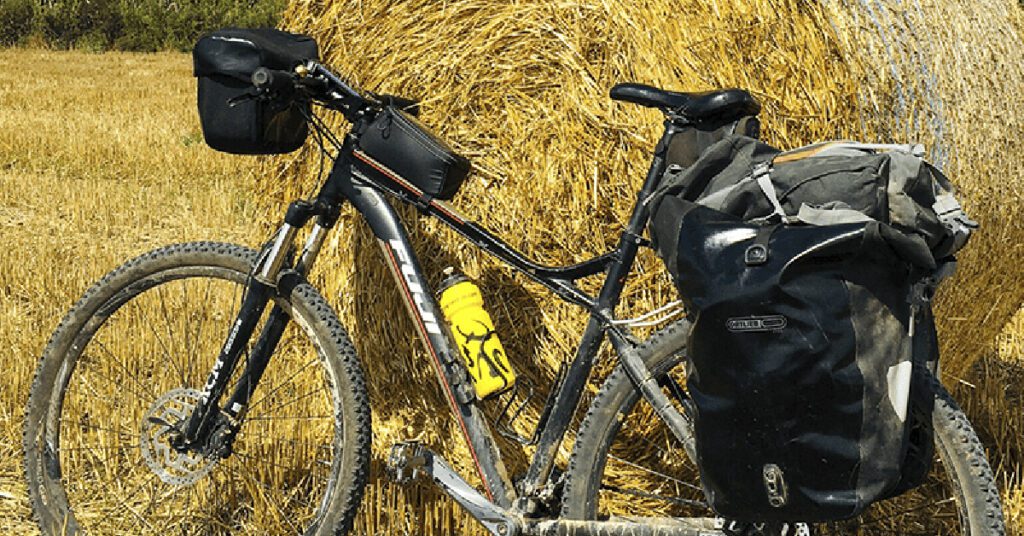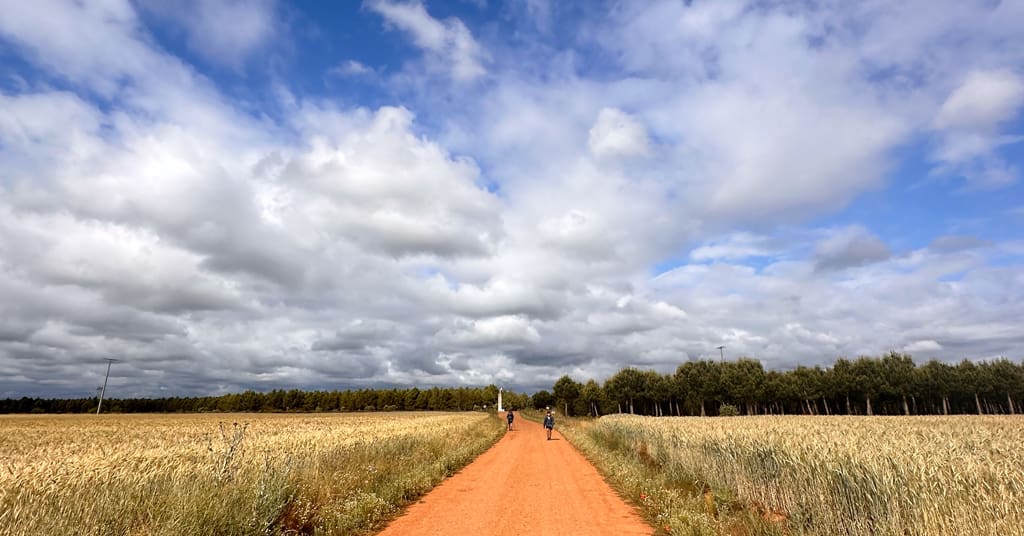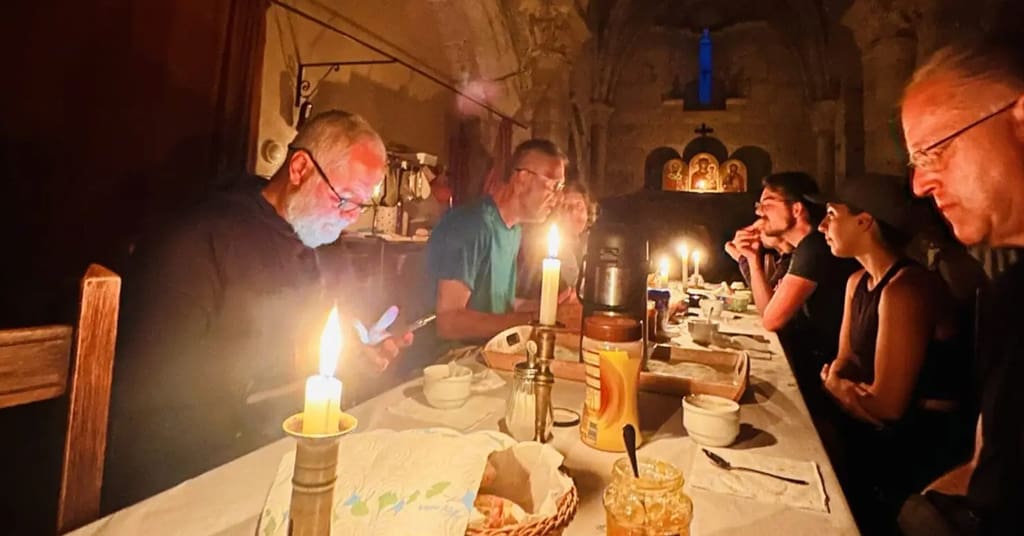Cycling the Camino
Here are 10 great tips
The first time I cycled the Camino, I thought it would be pretty easy. I bike about 20 miles a day commuting to and from work, so I figured that I’d be well-prepared. But I was in for a big surprise. Biking the Camino turned out to be physically and spiritually challenging in ways I hadn’t anticipated.
Physically, the Camino was much tougher than expected. I found myself frequently pushing—and sometimes even carrying—my bike over mountains and along rough trails. With panniers strapped to the sides, it often felt like I was hauling a metal gate across Spain. Then there were the punctures, breakdowns, and even getting lost. You’d think the yellow arrows marking the Camino would make it impossible to lose your way. Believe me, you can still get lost! If you happened to have passed someone having a “John Cleese moment,” kicking and shouting at a defenceless bike, well, that was probably me.
And emotionally it was tough too. It was just lonely. I am the type of person who could happily spend a month alone in a lighthouse with a few good books. But on the Camino, it felt different. The Camino is about connection and building friendships. Because I was moving faster than the walkers, I missed out any of the companionship they shared along the way. Sometimes I felt like the Little Match Girl, peering through the window as I watched fellow pilgrims sharing meals and building relationships over days of walking together. And there I was, alone.
But I really don’t want to put you off cycling the Camino—it’s is an incredible experience. Honestly, it’s probably one of the most epic bike rides you could ever imagine, with the albergues offering inexpensive accommodation, the stunning paths, and all the rich history. You just need to be prepared.
So, here’s my top 10 list of things to consider if you are planning to cycle the Camino !
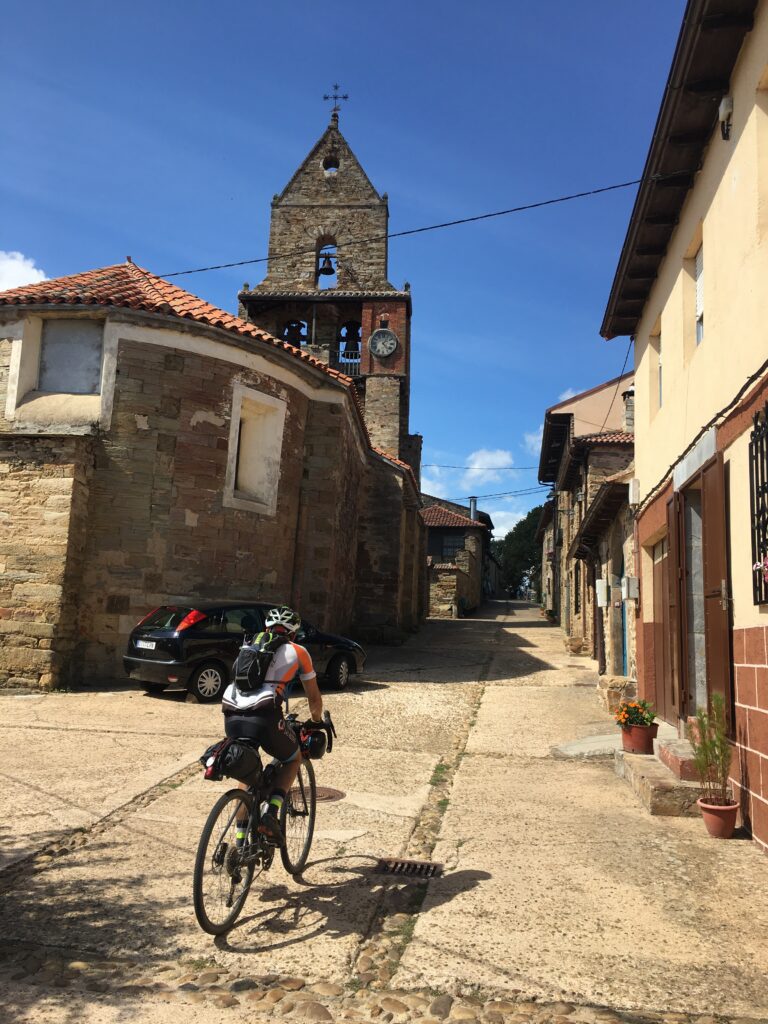
1. Go with a Friend (or a Few)
When walking the Camino heading off by yourself can be amazing, but cycling it alone can feel very isolating. If you’re biking, consider going with at least one other person. You don’t have to cycle as a group all the time—split up and reconnect throughout the day or every few days, but having someone to share the experience with will make the journey so much more rewarding.
2. Seek Out Albergues with Communal Meals
Communal meals are a fantastic way to connect with other pilgrims, even if you’re on a bike. Many albergues offer communal dinners. Here is a list of 10 of my favourite albergues on the Camino Frances.
3. Decide Whether to Rent or Bring Your Own Bike
Experienced cyclists on extended journeys may want to bring their own bikes, but if you’re only going for a few weeks, renting is often so much easier and also just as affordable, especially if you need to fly your bike to Spain. There are several companies that rent bikes along the Camino; you can pick up the bike in one city and return it in another. I recommend Cycling Rentals, which charges around $250 for the first week, with an additional $100 for each subsequent week. E-bikes are usually about twice that cost.
4. Choose the Right Bike
For the Camino, I’d recommend a gravel or mountain bike, as they’re best suited for the mixed trails. Road bikes are fine for those planning to stick to paved roads, but they’re not ideal for the rougher trails. E-bikes can also be a good choice, but keep in mind they’re heavy for challenging trails. Personally, I like the gravel bike, as it’s a nice combination of light and rugged.
5. Be Ready for Some Assembly
When you rent a bike, it will usually be delivered in a box, so you’ll need to do a bit of setup, like attaching pedals and adjusting handlebars. Don’t rush this process; I once didn’t follow the instructions correctly and had to take my bike to a mechanic to get it properly set up and lost a day. Also, not all albergues accept bike deliveries, so coordinate with your rental company and confirm your accommodation in advance.
6. Pack Essential Gear
Your rental will likely come with basics like a pump, spare tubes, and mini tools, but I’d advise bringing extras: 2–3 spare tubes, extra lights (use battery-powered, not USB-rechargeable ones), and a bell. A phone holder is also crucial for navigation; you’ll move too quickly to rely solely on the yellow arrows and will need GPS or an app like TrailSmart.
7. Be Courteous to Walkers
Cyclists move faster, so it’s easy to startle walkers. Use a bell when approaching from behind and, if possible, stick to the road if there’s a parallel path. Also don’t forget to use your bell, walkers are often in a reflective mindset, so a friendly heads-up helps them stay relaxed and lets you pass more comfortably.
8. Train and Practice Basic Repairs
If you’re not a regular cyclist, don’t just dive into two weeks of biking the Camino. Train beforehand, and even more importantly practice simple repairs like changing a tube. Trust me, you’ll get a puncture, and knowing how to fix it yourself will save you so much time and frustration.
9. Plan Routes Carefully – Don’t Follow the Walking Path Blindly
Some sections of the Camino are dangerous or simply impractical for cyclists. There are steep, rocky paths—like the descent into Roncesvalles or Zubiri—that you should avoid. Many guidebooks, like the one by John Brierley, clearly mark sections where the road is safer than the trail. I make it a habit to plan my route each evening, referring to these maps to avoid unpleasant surprises.
Also in the busier sections, particularly after Sarria, there may be so many walkers that you’ll need to stick to road alternatives anyway.
10. Find Cyclist-Friendly Albergues
Several albergues cater specifically to cyclists, with facilities like bike storage, washing areas, and workbenches for repairs. These stops are also a great place to meet other cyclists and share tips. Here are a few cyclist-friendly albergues I recommend:
- Albergue de Nájera in Nájera
- El Salto in Belorarda
- Albergue Guiana in Ponferrada
Also, there is a great list of albergues that accept bikes here: Camino Cyclist’s list of bike-friendly albergues
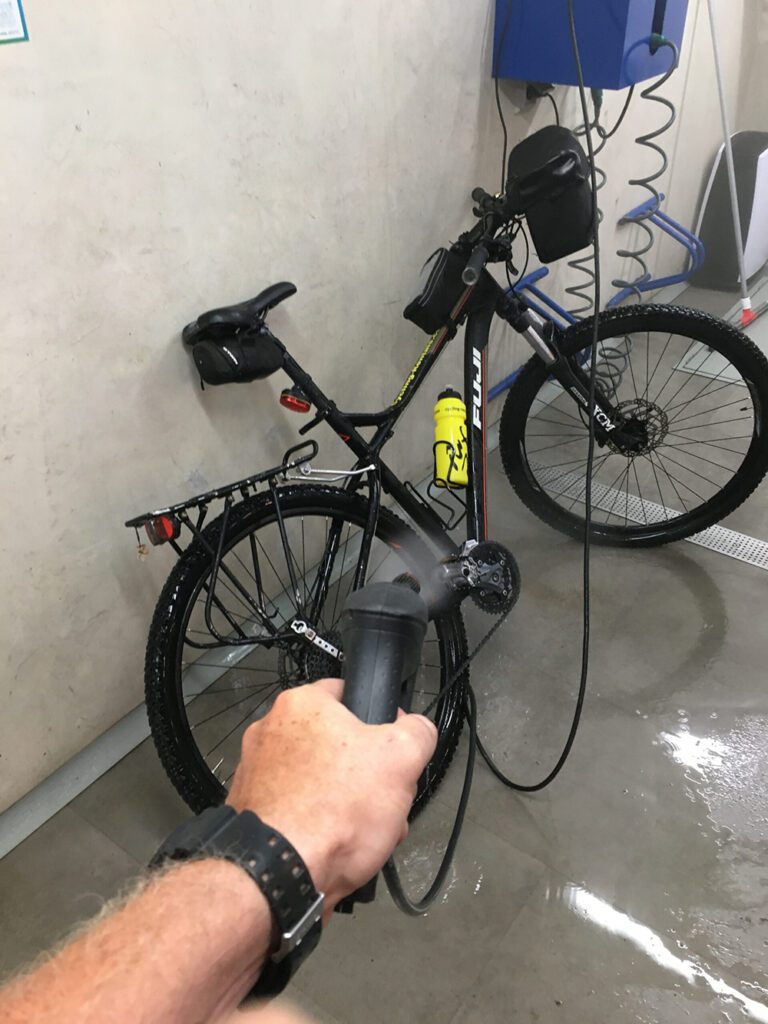
Biking the Camino is a unique way to experience the journey. It’s challenging but immensely rewarding if you prepare well and approach it with the right expectations.
Safe travels and Buen Camino!

